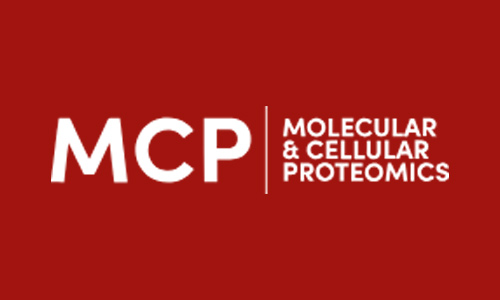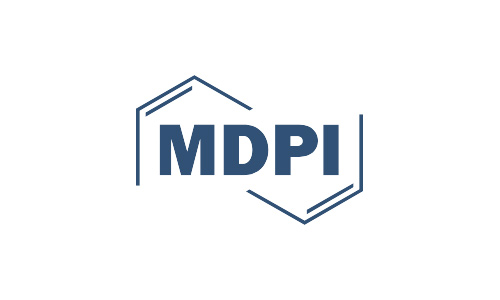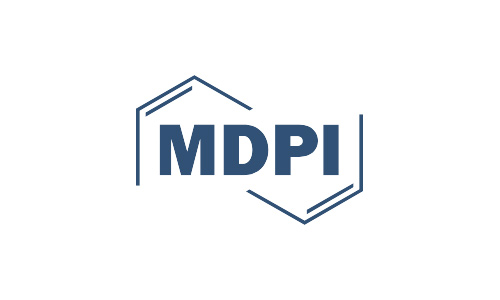- Follow Us
Scientific Publications
High-profile publications featuring CDI Labs next-gen proteomics technologies and services
354 Total Publications
Refine Your Search
Publication Details
- Date
- Link
- + Abstract

Molecular & Cellular Proteomics
- Main Product: HuProt
- Secretome Analysis Using Affinity Proteomics and Immunoassays: A Focus on Tumor Biology
- Vanessa M. Beutgen, Veronika Shinkevich, Johanna Pörschke, Celina Meena, Anna M. Steitz, Elke Pogge von Strandmann,...
- Institute of Translational Proteomics, Philipps University
The study of the cellular secretome using proteomic techniques continues to capture the attention of the research community across a broad range of topics in biomedical research. Due to their untargeted nature, independence from the model system used, historically superior depth of analysis, as well as comparative affordability, mass spectrometry-based approaches traditionally dominate such analyses. More recently, however, affinity-based proteomic assays have massively gained in analytical depth, which together with their high sensitivity, dynamic range coverage as well as high throughput capabilities render them exquisitely suited to secretome analysis.

MDPI: Molecules
- Main Product: HuProt
- Dehydroevodiamine Alleviates Ulcerative Colitis by Inhibiting the PI3K/AKT/NF-κB Signaling Pathway via Targeting AKT1 and Regulating Gut Microbes and Serum Metabolism
- Xiao Ma, Qichao Hu, Tao Jiang, Yuan Chen, Wenwen Zhang, Pan Gao, Jinhao Zeng and Thomas Efferth
- Key Laboratory of Southwestern Chinese Medicine Resources, Chengdu University of Traditional Chinese Medicine
Ulcerative colitis (UC) is a typical inflammatory bowel disease (IBD), impairing the quality of life of patients. Dehydroevodiamine (DHE) is an active alkaloid isolated from Tetradium ruticarpum that exerts significant anti-inflammatory effects in gastrointestinal diseases. However, the effect and mechanisms of DHE on UC remain unclear. We performed a DSS-induced experimental UC rat model to reveal the efficacy and potential mechanisms of DHE on UC. HE and AB-PAS staining were used for the evaluation of pathologies, and 16S rRNA sequencing was used to detect changes in gut microbes.

BMC - Chinese Medicine
- Main Product: HuProt
- Polyphyllin I exerts anti-hepatocellular carcinoma activity by targeting ZBTB16 to activate the PPARγ/RXRα signaling pathway
- Lu shan, Yijun Chen, Guo An, Xiaoyu Tao, Chuanqi Qiao, Meilin Chen, Jiaqi Li, Ruichao Lin, Jiarui Wu & Chongjun Zhao
- Dept of Clinical Chinese Pharmacy, Beijing University of Chinese Medicine
Studies have reported that polyphyllin I (PPI) had effective anti-tumor activity against hepatocellular carcinoma (HCC). However, the precise molecular mechanism of this action and the direct target remain unclear. The aim of this study was to discover the molecular targets and the exact mechanism of PPI in the treatment of HCC.

Movement Disorders
- Main Product: HuProt
- Autoimmune Neurobeachin Cerebellar Ataxia
- Eati Basal PhD, Michael Gilligan MB, BCh, Connie Lesnick MS, Andrew McKeon MD
- Dept of Laboratory Medicine and Pathology, Mayo Clinic
There are more than 30 immunoglobulin G (IgG) autoantibody biomarkers of autoimmune cerebellar ataxia reported. To describe a novel IgG biomarker targeting neurobeachin, a scaffolding protein integral to synapse formation and function. Clinical and laboratory-based assessment was used for a novel diagnostic biomarker of autoimmune ataxia.

MedComm
- Main Product: HuProt
- An autoantibody profile identified by human genome-wide protein arrays in rheumatoid arthritis
- Xu Liu, Xiaoying Zhang, Yu-Jian Kang, Fei Huang, Shuang Liu, Yixue Guo, Yingni Li, Changcheng Yin, Mingling Liu, Qimao...
- Dept of Rheumatology and Immunology, Peking University People's Hospital
Precise diagnostic biomarkers of anticitrullination protein antibody (ACPA)-negative and early-stage RA are still to be improved. We aimed to screen autoantibodies in ACPA-negative patients and evaluated their diagnostic performance. The human genome-wide protein arrays (HuProt arrays) were used to define specific autoantibodies from the sera of 182 RA patients and 261 disease and healthy controls. Statistical analysis was performed with SPSS 17.0. In Phase I study, 51 out of 19,275 recombinant proteins covering the whole human genome were selected. In Phase II validation study, anti-ANAPC15 (anaphase promoting complex subunit 15) exhibited 41.8% sensitivity and 91.5% specificity among total RA patients.

Advanced Science
- Main Product: HuProt
- Ponicidin Promotes Hepatocellular Carcinoma Mitochondrial Apoptosis by Stabilizing Keap1-PGAM5 Complex
- Bixin Zhao, Zuhui Liang, Lisheng Zhang, Lin Jiang, Yuanhang Xu, Ying Zhang, Rong Zhang, Caiyan Wang, Zhongqiu Liu
- Guangzhou University of Chinese Medicine
Ponicidin is a diterpenoid with demonstrated antitumor activity in clinical trials. However, the specific function and mechanism of action against hepatocellular carcinoma (HCC) remain unknown. In this study, it is found that ponicidin significantly inhibited the proliferation and migration of HCC cells. It is shown that ponicidin targets Keap1 and promotes the formation of the Keap1-PGAM5 complex, leading to the ubiquitination of PGAM5, using biotin-labeled ponicidin for target fishing and the HuProtTM Human Proteome Microarray V4.0.

MDPI: Antibodies
- Main Product: HuProt
- Anti-TCP1 Antibody Is a Potential Biomarker for Diagnosing Systemic Lupus Erythematosus
- Sang-Won Lee, Wook-Young Baek, So-Won Park, Jee-Min Chung, Ji-Hyun Park, Ho Chul Kang, Ju-Yang Jung and Chang-Hee Suh
- Dept of Rheumatology, Ajou University School of Medicine
Systemic lupus erythematosus (SLE) is a chronic inflammatory disease caused by autoantibodies. Serum samples from patients with SLE (n = 10) were compared with those from normal controls (NCs, n = 5) using 21K protein chip analysis to identify a biomarker for SLE, revealing 63 SLE-specific autoantibodies. The anti-chaperonin-containing t-complex polypeptide-1 (TCP1) antibody exhibited higher expression in patients with SLE than in NCs. To validate the specificity of the anti-TCP1 antibody in SLE, dot blot analysis was conducted using sera from patients with SLE (n = 100), rheumatoid arthritis (RA; n = 25), Behçet’s disease (BD; n = 28), and systemic sclerosis (SSc; n = 30) and NCs (n = 50).

Elsevier - Science Direct
- Main Product: HuProt
- Akkermansia muciniphila-derived pentadecanoic acid enhances oxaliplatin sensitivity in gastric cancer by modulating glycolysis
- Qixuan Xu, Jingwang Gao, Ruiyang Zhao, Hanghang Li, Hao Cui, Zhen Yuan, Huiguang Ren, Bo Cao, Bo Wei
- Dept of General Surgery, First Medical Center, Chinese PLA General Hospital
Accumulating evidence has proved the close association between alterations in gut microbiota and resistance to chemotherapeutic drugs. However, the potential roles of gut microbiota in regulating oxaliplatin sensitivity in gastric cancer (GC) have not been investigated before. We first found that antibiotic treatment diminished the therapeutic efficacy of oxaliplatin in a GC mouse model. Importantly, this effect could be transmitted to germ-free mice via fecal microbiota transplantation, indicating a potential role of gut microbiota modulation in oxaliplatin efficacy.

BMC - Cell Communication and Signaling
- Main Product: HuProt
- Novel energy optimizer, meldonium, rapidly restores acute hypobaric hypoxia-induced brain injury by targeting phosphoglycerate kinase 1
- Fengying Liu, Huanhuan He, Weijie Yang, Daohui Wang, Xin Sui, Yangyang Sun, Shuai Wang, Yi Yang, Zhenyu Xiao, Jun Yang,...
- State Key Laboratory of Toxicology and Medical Countermeasures, Beijing Institute of Pharmacology and Toxicology
Acute hypobaric hypoxia-induced brain injury has been a challenge in the health management of mountaineers; therefore, new neuroprotective agents are urgently required. Meldonium, a well-known cardioprotective drug, has been reported to have neuroprotective effects. However, the relevant mechanisms have not been elucidated. We hypothesized that meldonium may play a potentially novel role in hypobaric hypoxia cerebral injury.

Cell Death & Disease
- Main Product: HuProt
- Scutellarin activates IDH1 to exert antitumor effects in hepatocellular carcinoma progression
- Zhao Cui, Caifeng Li, Wei Liu, Mo Sun, Shiwen Deng, Junxian Cao, Hongjun Yang, Peng Chen
- Beijing Key Laboratory of Traditional Chinese Medicine Basic Research on Prevention and Treatment for Major Diseases
Isochlorate dehydrogenase 1 (IDH1) is an important metabolic enzyme for the production of α-ketoglutarate (α-KG), which has antitumor effects and is considered to have potential antitumor effects. The activation of IDH1 as a pathway for the development of anticancer drugs has not been attempted. We demonstrated that IDH1 can limit glycolysis in hepatocellular carcinoma (HCC) cells to activate the tumor immune microenvironment. In addition, through proteomic microarray analysis, we identified a natural small molecule, scutellarin (Scu), which activates IDH1 and inhibits the growth of HCC cells. By selectively modifying Cys297, Scu promotes IDH1 active dimer formation and increases α-KG production, leading to ubiquitination and degradation of HIF1a.